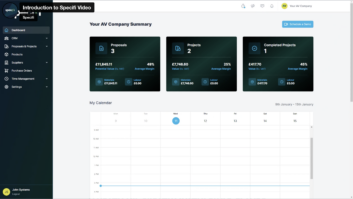There are lessons to be learned from the demise of Kaleidescape and now is a good time to do a tear down on what happened. After all, as home technology professionals, we don’t want to be caught in the lurch by the next market victim.
For Kaleidescape, their failure seems to boil down to three main points, only one of which the home technology professional world can strategize around.
1.The MPAA has a ton of lawyers and money. I haven’t seen their P&L, but it’s a sure bet that Kaleidescape was spending a ton of money on licensing and access to the studios. Even at the dizzying price tags associated with a Strato or Encore system, you can bet they weren’t getting much more than a 40-point gross profit margin. We all know how hard it is to make money with high gross profit margins so imagine starting off your profit battle with half your men dead.
2.Kaleidescape was tremendously expensive compared with streaming media solutions and a product typically purchased by top the top one percent income earners. That said, if you talk to any Kaleidescape system owner, they’ll tell you what we all know. There is no experience like Kaleidscape, and it proved for years that clients will pay for a superior product when money isn’t the biggest driver.
3.“Good enough” streaming solutions were catching up fast. There’s still nothing like a Blu-Ray disc or Kaleidescape experience for watching movies (especially those with a lot of fast moving scenes), but most consumers either don’t care or are perfectly happy to settle for “good enough.” We saw this first with music, and video soon followed suit. There’s an entire generation out there that has no clue what a really good album on vinyl or other lossless media sounds like. Sure enough, vinyl has made a comeback with the hipsters, but that’s a small sliver of the market. Video is no different, with easy access to streaming content from Netflix, Hulu, and Amazon. It’s not great video quality, but some of it is better than cable providers offer and more importantly, it’s easy.

ThinkStock Image
The only point of failure we can position our companies around is the phenomenon of “good enough.” Instead of complaining about it, we need to understand it, realize who’s affected by it most and market to those most likely to continue making their purchase decisions by putting simplicity and overall quality over price.
Someone settling for “good enough” on the audio or video sources in their home will most likely still want the highest quality display or speakers that they can justify purchasing. Buying behavior dictates that the consumer sees sources like Roku, Apple TV, Fire TV, etc. as interchangeable and upgradeable, but video displays or speakers more as built-in appliances to be upgraded less frequently. We can assume that set-top boxes need an upgrade every two years, while TVs might stay for five to eight years, depending on taste. Speakers are seen as a forever purchase no matter how much we try to position them otherwise. If a product goes in the wall, the consumer doesn’t want to touch it ever again unless there’s good reason for it (recent examples include new full-bleed grilles and Origin’s 8-inch woofer in a 6-inch enclosure approach).
The best approach we can take as an industry living in the United States of Good Enough is to meet the consumer where they want to be met. Sell them the throwaway streamer boxes as part of a solution. Sell them fantastic OLED displays and 4K projectors. Educate and set expectations up front. Tell them they’re entering a long-term relationship with you. Email them often, educating them about what’s going on with your company and our industry. Make them offers based on what they’ve bought from you in the past. Market to them, when you’re done marketing to them, market to them some more. Cater to their desire for “good enough,” while installing solutions that work properly and are easy to use. Offer managed services agreements and use solutions like ihiji, OvrC, or Domotz to generate recurring monthly revenue (RMR) for your business and to keep your clients’ systems running.
Quit whining that nobody appreciates quality anymore. Leverage existing consumer opinions, listen, educate, set expectations, and start making more profit margin through RMR.
Stay frosty and see you in the field.







